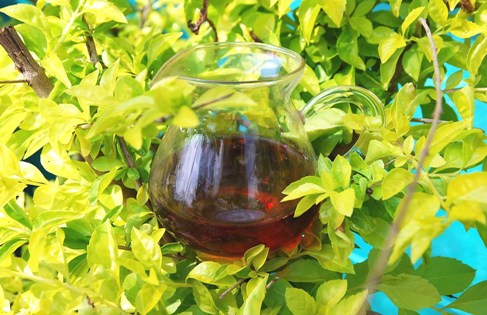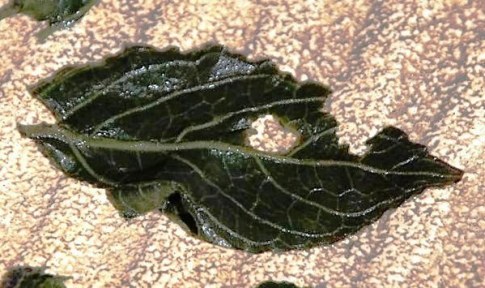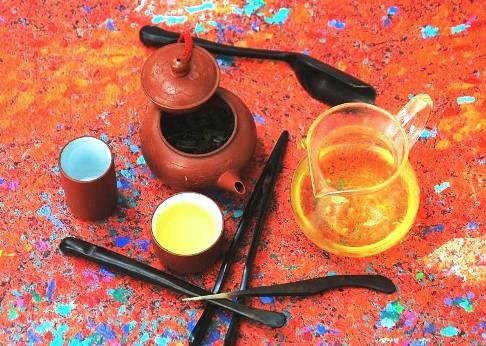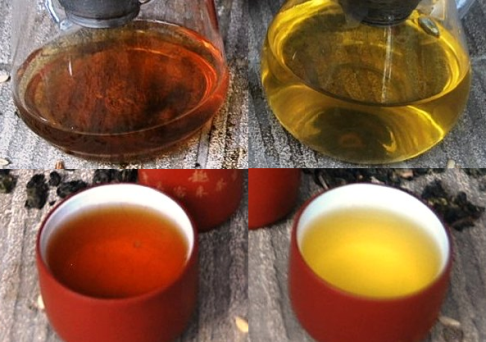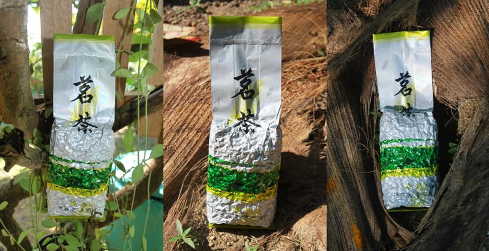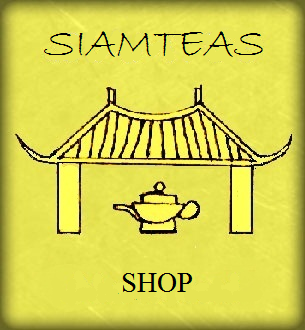Tea Creations
Tea & Herbs
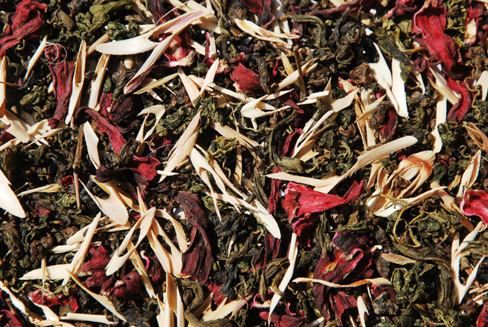
Some tea creations – blends of tea and herbs, such as black tea blended with lemongrass, are a standard in my south east Asian countries. Other ideas for refreshing and delicious tea blends, such as the blend from black tea and roselle hibiscus, have developed as “obvious choices” in the context of using and dealing with the relevant teas and herbs for a while.
Thai Black Tea / Lemongrass Blend
Thai Black Tea / Lemongrass Tea Mixure that combines the best from 2 worlds: that of quality high mountain black tea and that of refreshing lemongrass, which owes its name to the lemon-like scent and aroma of the essential oil ‘Citral’ contained in the grassy plant that grows up to 1 m high.
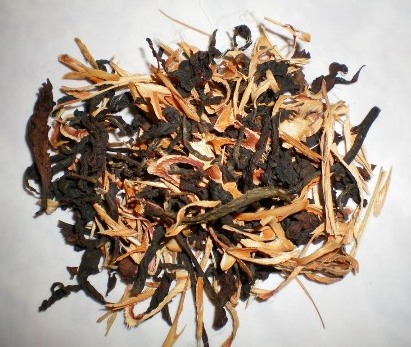 buy Black Tea / Lemongras Blend at Siam Tea Shop
buy Black Tea / Lemongras Blend at Siam Tea Shop
In Thailand, the wild growing lemongrass serves as a characteristic ingredient of some typical Thai dishes such as the famous Tom Yum soup or in pure or mixed form for hot or iced tea.
In both the Asian and the European folk medicine, a long range of health benefits are attributed to lemgrass: stimulation of the digestive tract, healing effects on cold and fever conditions, sleep-inducing support with insomnia, relieve of menstrual cramps, detoxifying feature, enhancement of concentration and intellectual power, and more. In the case of our Thai Black Tea Lemongrass mixture, to these add the well known healthy properties of black tea.
Our very best argument, however, for enjoying our Black Tea / Lemongrass mix hot or as iced tea is its delicious, refreshing taste! Full-bodied, rich black tea aroma, contrasted and complemented by the refreshing, elevating light taste of the lemon grass.
click here forBlack Tea / Lemongras hot or ice tea preparation and serving suggestions
Jin Xuan Black Pearls / Roselle Hibiscus
Siam Summer Dream
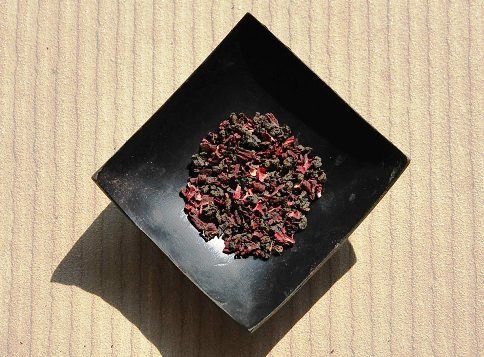 buy Jin Xuan Black Pearls / Roselle Hibiscus tea creation here
buy Jin Xuan Black Pearls / Roselle Hibiscus tea creation here
This blend of Thai Roselle (Hibiscus Subdariffa) and north Thailand’s best black tea is the result of a spontaneous intuition. Well knowing about the exquisite aromatic wealth of our DMS Jin Xuan Black Pearls, the idea to blend both ingredients virtually leaped into our at our first degustation of Thai Hibiscus blossom tea. First blending experiments confirmed the wonderful combination of tastes of this mild and soothing black tea and the fresh citrus- and rosehip-like note of the hibiscus blossom at once. An experimental series (see our article Black Pearls / Hibiscus Blossom Tea EXP No. 1 in Siam Tea Blog) finally led to the optimization of the results, and here we are, introducing our first in-house tea creation.
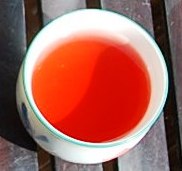 North Thailands best black tea, made from the Taiwanese Jin Xuan cultivar of the tea plant, camellia sinensis, in a wedding of tastes with the also native to Thailand (as to many other south east Asian countries) hibiscus blossom of hibiscus sabdariffa, whose calyxes are traditionally serving the preparation and enjoyment of a refreshing tea beverage in a range of cultures. Also, a range of positive health effects and benefits are attributed to the tea from the hibiscus blossom in many countries’ folk medicines.
North Thailands best black tea, made from the Taiwanese Jin Xuan cultivar of the tea plant, camellia sinensis, in a wedding of tastes with the also native to Thailand (as to many other south east Asian countries) hibiscus blossom of hibiscus sabdariffa, whose calyxes are traditionally serving the preparation and enjoyment of a refreshing tea beverage in a range of cultures. Also, a range of positive health effects and benefits are attributed to the tea from the hibiscus blossom in many countries’ folk medicines.
At this, each of the two ingredients gives up a good part of its own individual identity for the sake and benefit of the new creation. Tart and bitter components of the black tea aroma dissipate about completely. What is left of the Black Pearls is the wonderful “median”, sweet taste spectrum, in the blend (work title during the degustation and experimental period: “Siamese Summer Dream) perfectly mixing with the slightly sour citrus & rosehip-like taste of the Roselle Hibiscus blossom. The ready prepared tea beverage is refreshing and invigorates the senses, making it the perfect rereshment beverage on ice for hot summer days in the garden or for daily enjoyment either cool & chilled from the home fridge or as a soothing hot tea beverage at any time of the day.
a good part of its own individual identity for the sake and benefit of the new creation. Tart and bitter components of the black tea aroma dissipate about completely. What is left of the Black Pearls is the wonderful “median”, sweet taste spectrum, in the blend (work title during the degustation and experimental period: “Siamese Summer Dream) perfectly mixing with the slightly sour citrus & rosehip-like taste of the Roselle Hibiscus blossom. The ready prepared tea beverage is refreshing and invigorates the senses, making it the perfect rereshment beverage on ice for hot summer days in the garden or for daily enjoyment either cool & chilled from the home fridge or as a soothing hot tea beverage at any time of the day.
Black Pearls/Roselle Hibiscus hot or ice Tea
preparation/serving suggestions
”Cha Khao Hom“ is Thai language and in English simply means ”rice tea“. However, it is not a Thai version of Genmaicha and also not procedure of manufacturing an infusion beverage from rice either, but much rather an exclusive Thai tea specialty that like this is not available anywhere else in the world. In fact, Cha Khao Hom Rice Tea derives its particular taste – an intensive rice taste – not from a scenting with rice, as one would inevitably assume when trying, but from adding a special herb named “sticky rice” that is native to north Thailand, Burma, China and some other south east Asian countries during the tea’s processing, or more accurate during the heating of the tea leaves. We have been able to locate this herb in some Chinese language dictionaries, where it simply translated with the English term “sticky rice”, a term that is usually reserved for a particular way to prepare Thai jasmine rice (especially common in north east Thailand, the so-called ”Esaarn”).
However, the use of „sticky rice“ leaves for the scenting and/or flavoring of tea leaves is not completely new. We have found sources indicating that the herb is also being used to scent tea in China, more particular Yunnan (here: “Nuo Mi Xiang Nen Ye“ = ”sweet fragrance rice tender leaves“),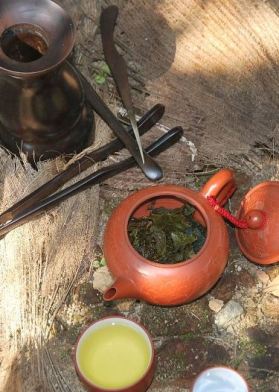 but there apparently exclusively for the flavoring or Pu Erh teas, while the scenting of Oolong-style processed tea leaves with “Nuo Mi Xiang Nen Ye“ leaves seems to be a procedure exclusive for Thailand. This doesn’t come as a surprise, though, as for once the origins of the major tea producing ethnic groups in north Thailand (Yunnan Chinese, Shan, and several mountain tribes) can all be tracked back to Yunnan, and second it is Oolong teas indeed that are most characteristic for the tea processing culture in north Thailand, while the production of Pu Erh tea is still in its very beginnings here, though there are signs indicating that could change in the future and Pu Erh tea production could very well soon establish as a regular part of the northern Thai tea portfolio.
but there apparently exclusively for the flavoring or Pu Erh teas, while the scenting of Oolong-style processed tea leaves with “Nuo Mi Xiang Nen Ye“ leaves seems to be a procedure exclusive for Thailand. This doesn’t come as a surprise, though, as for once the origins of the major tea producing ethnic groups in north Thailand (Yunnan Chinese, Shan, and several mountain tribes) can all be tracked back to Yunnan, and second it is Oolong teas indeed that are most characteristic for the tea processing culture in north Thailand, while the production of Pu Erh tea is still in its very beginnings here, though there are signs indicating that could change in the future and Pu Erh tea production could very well soon establish as a regular part of the northern Thai tea portfolio.
Whoever tries “Cha Khao Hom“ Rice Tea for the first time and knows the taste of Thai sticky rice, will perceive this naming – as strange as this might appear for a herb – as extremely matching. In fact, the taste the tea derives from the herb is virtually identical with that of Thai (or Chinese, for that matter) sticky rice, with one difference, namely that it is a lot more intense: no sticky rice tastes as much like sticky rice as the leaves of the “sticky rice” herb, Nuo Mi Xiang Nen Ye .
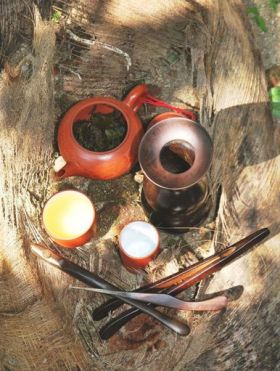 Cha Khao Hom Rice Tea initially became known in its classical version, consisting of tea leaves from the assamica tea tree native to north Thailand scented with the Nuo Mi Xian Nen Ye “sticky rice” herb. The result is an extremely taste-intense tea, in which the dominant earthy taste notes of the Assamica Oolong combine with those of the sticky rice herb and are even superimposed by the latter to such extent that the tea will appear as too adulterated for man tea “purists”. Nevertheless, this tea has found its fans in the past, and not only within the circles of lovers of scented and flavored teas, but also among passionate tea lovers, who have admitted the Nuo Mi Xiang Nen Ye “sticky rice“ herb into their list of herbs legitimately used to scent Chinese teas, where it is placed amidst the company of reputed flowers and herbs such as jasmine or osmanthus blossoms and ginseng roots, which are also traditionally used and widely accepted as aroma donors for Chinese teas.
Cha Khao Hom Rice Tea initially became known in its classical version, consisting of tea leaves from the assamica tea tree native to north Thailand scented with the Nuo Mi Xian Nen Ye “sticky rice” herb. The result is an extremely taste-intense tea, in which the dominant earthy taste notes of the Assamica Oolong combine with those of the sticky rice herb and are even superimposed by the latter to such extent that the tea will appear as too adulterated for man tea “purists”. Nevertheless, this tea has found its fans in the past, and not only within the circles of lovers of scented and flavored teas, but also among passionate tea lovers, who have admitted the Nuo Mi Xiang Nen Ye “sticky rice“ herb into their list of herbs legitimately used to scent Chinese teas, where it is placed amidst the company of reputed flowers and herbs such as jasmine or osmanthus blossoms and ginseng roots, which are also traditionally used and widely accepted as aroma donors for Chinese teas.
What so far posed a significant difference between the scenting of Chinese teas with Nuo Mi Xiang Nen Ye in north Thailand and other traditional natural aroma donors, was the “decency” of the flavoring, manifesting in the requirement often represented by tea „purists” that such aroma donor may only complement the taste of a tea with a decent, harmonic note, but not significantly or even completely superimpose the same. In order to meet this requirement, northern Thai tea producers have recently developed a “Premium” version of Cha Khao Hom Rice Tea, characterized once by the use of tea leaves from the Taiwan Oolong cultivar No. 12 (Jin Xuan Oolong tea), which is generally considered as rather “fine” and “luxurious” instead of the leaves from the assamica tea tree native to north Thailand for the scenting with the Nuo Mi Xiang Nen Ye „sticky rice“ herb. And second, the scenting of the Premium Cha Khao Hom is done rather decently – compared with the classic version – so that in the result the taste of the tea is not as much superimposed, but much rather complemented in a decent way, thereby creating a completely new taste that will also live up to purists’ high standards and assert both flavors in a harmonious, well-balanced manner.
At this, however, the comparative attribute „better“ can hardly be awarded to any of the two versions, as also here “better“ is – as so often and actually always with the rating of a tea’s taste – not only a question of taste, but also one of time and occasion. Even if the Premium version of Cha Khao Hom has very quickly established as a favorite in our own house, we wouldn’t like to miss the classic Cha Khao Hom Rice Tea in our tea shelve – and in our tea pot – at all, as each tea has its time, and each tea has its occasion, where it will be more suitable than another. However, what can be taken for granted is that who used to like the classic Cha Khao Hom Thai Rice Tea, will also love the Premium verion, while the latter will most probably make the scenting of tea with Nuo Mi Xiang Nen Ye new friends in tea lover circles and beyond.
If we’ve managed to make you curious about Cha Khao Hom Thai rice tea, you will find both versions offered at our

